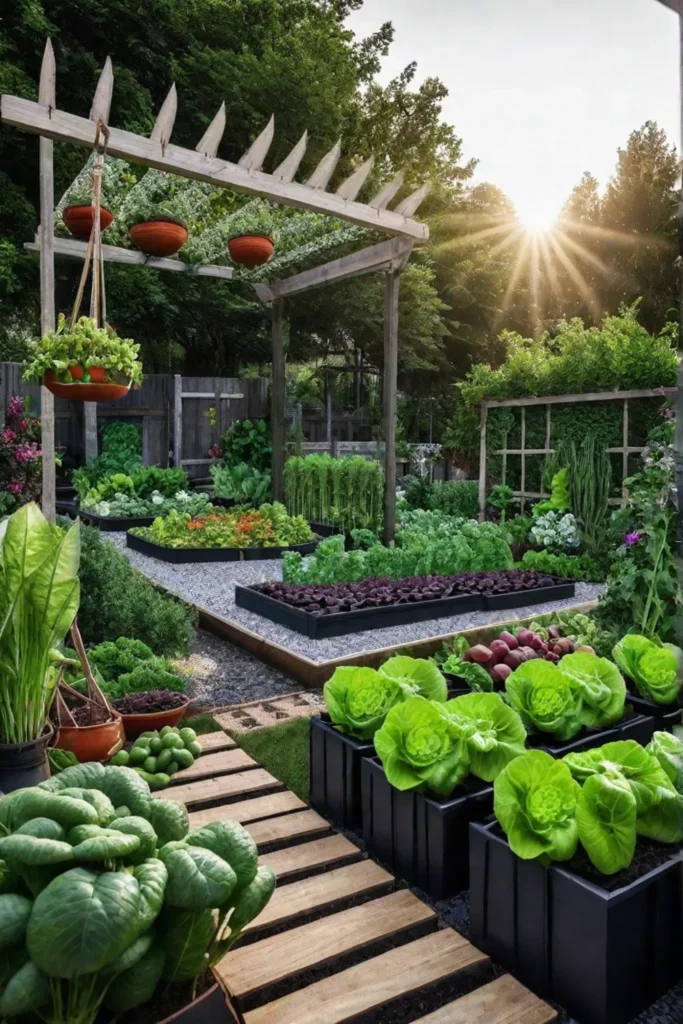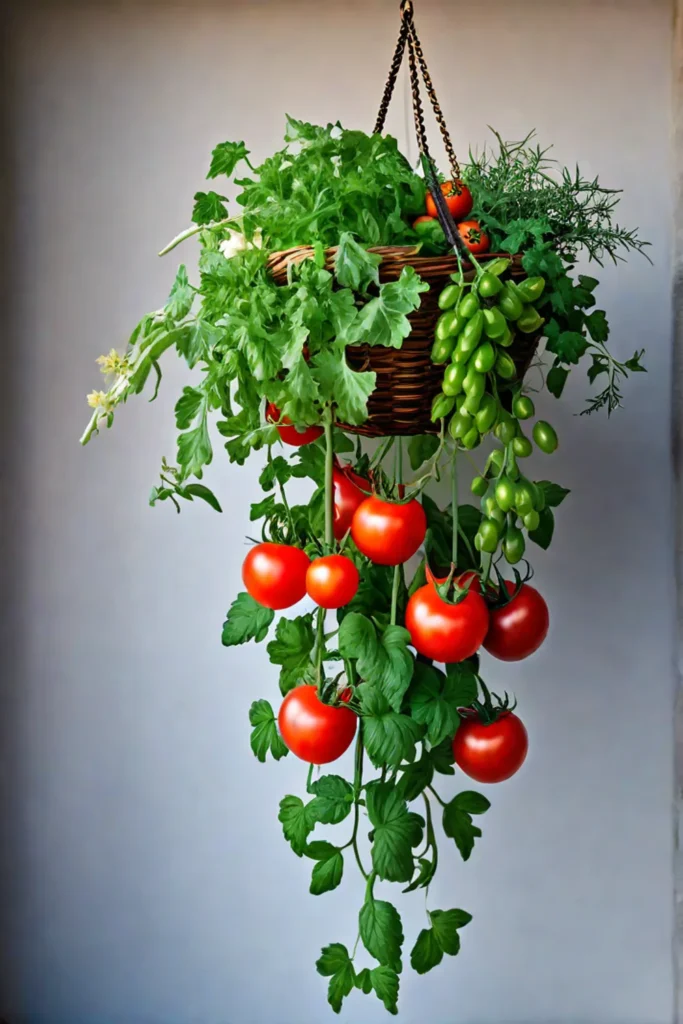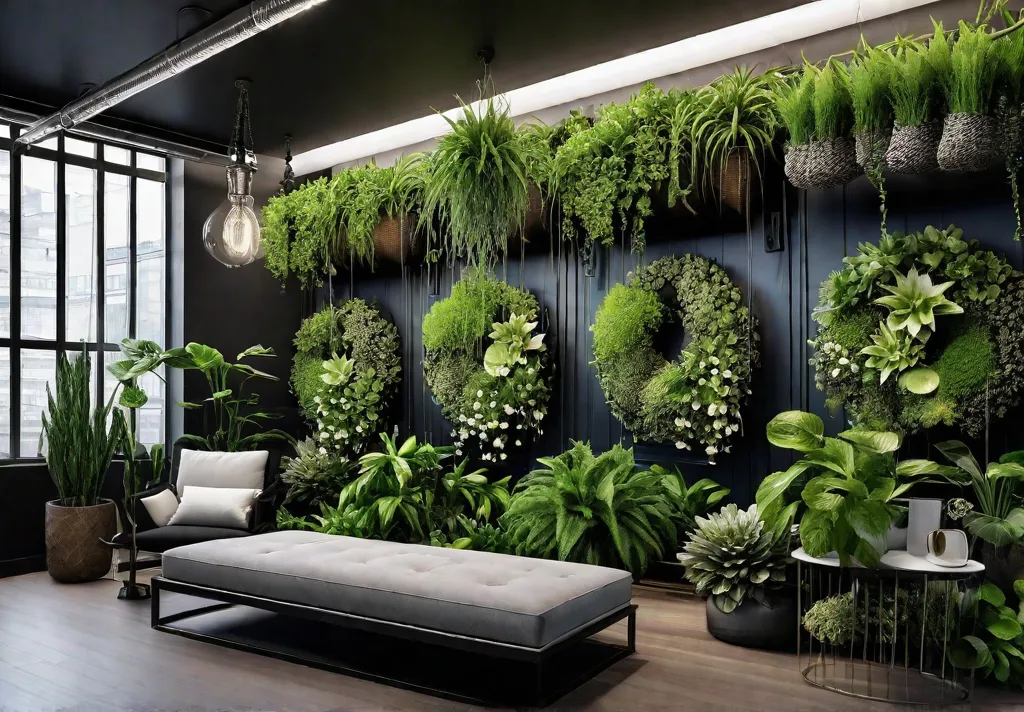Are you tired of feeling like your vegetable garden is stuck in a rut? Are you yearning to get more out of that precious outdoor space? As a New York City lifestyle writer, I’ve seen urban gardeners get creative to boost their yields without sacrificing precious square footage. The secret? Vertical gardening and companion planting.
These innovative techniques allow you to grow more food in less space while also enhancing the overall health and beauty of your garden. Whether you’re a seasoned green thumb or just starting to dip your toes into vegetable gardening, the ideas I’m about to share will open up a whole new realm of possibilities.
So, transform your backyard (or balcony!) into a thriving, high-yield oasis. From stacking planters to strategic plant pairings, I’ll walk you through 10 inspiring ways to maximize your vegetable garden using vertical and companion planting methods. Let’s dive in!
Understanding Vertical Gardening
First, let’s explore the wonders of vertical gardening. This game-changing technique involves growing plants upwards instead of sprawling them across the ground. By utilizing walls, trellises, and other vertical structures, you can significantly increase your growing area without taking up more floor space.

The benefits of vertical gardening are numerous. It allows you to pack more plants into a smaller footprint, making it perfect for urban gardens or homes with limited outdoor space. But that’s not all – vertical gardens can improve air quality, regulate temperatures, and even reduce noise levels in your little slice of green heaven.
Of course, there are a few key considerations when setting up a vertical garden. You’ll need to choose sturdy, reliable materials to support the weight of your plants and ensure your crops get enough sunlight. But with a little planning and creativity, the payoff is well worth it.
Companion Planting 101
Let’s talk about the other half of this dynamic duo: companion planting. This age-old technique strategically pairs different plants to create a mutually beneficial relationship. The idea is to harness the natural synergies between species, resulting in healthier, more productive gardens.
Companion planting can work wonders in various ways. Some plants act as natural pest deterrents, protecting their neighbors from harmful insects. Others help improve soil quality by fixing nitrogen or adding essential nutrients deep within the earth. And remember the pollination boost you can get from carefully curated plant combinations!

The possibilities are endless when it comes to companion planting. From the classic “Three Sisters” (corn, beans, and squash) to the dynamic duo of tomatoes and basil, countless pairings exist to explore. The key is to pay attention to each plant’s unique needs and characteristics and then let nature work its magic.
10 Creative Vertical and Companion Planting Ideas
Ready to take your vegetable garden to new heights? Let’s dive into ten inspiring ideas that blend the power of vertical gardening and companion planting:
Pallet Garden
Repurpose those old wooden pallets into a vertical growing system by attaching landscape fabric to the back and filling them with soil and plants. This budget-friendly solution allows easy customization and can be tailored to fit even the smallest spaces.
Trellis System
Install sturdy trellises made from bamboo, metal, or other durable materials to support climbing vegetables like beans, cucumbers, and peas. This will save precious ground space and create a beautiful living wall of greenery.

Hanging Baskets
Suspend baskets filled with herbs, tomatoes, or other small veggies from hooks or chains on your walls or ceilings. This vertical approach is perfect for balconies, patios, or any area with limited floor space.
The Three Sisters
Combine the classic corn, beans, and squash trio in the same plot to create a self-sustaining ecosystem. The corn provides a natural trellis for the climbing beans, while the squash covers the ground to suppress weeds and retain moisture.
The Rule of Three
Group plants with similar nutrient requirements, such as lettuce, radishes, and spinach. This “rule of three” ensures optimal use of resources and helps prevent soil depletion.
Intercropping
Interplant fast-growing crops like radishes between slower-maturing ones like broccoli to maximize your garden’s real estate. As the quicker crops are harvested, they make room for the longer-growing plants to thrive.

Square Foot Gardening
Divide your vegetable beds into one-foot square sections, each containing a specific type of plant. This structured approach allows for easy tracking and efficient space utilization.
Keyhole Design
Create a raised bed shaped like a keyhole, with a central pathway leading to the center. This design promotes easy access without stepping on the growing area, reducing soil compaction.
Vertical Herb Garden
Construct a living wall of various herbs using a modular system that can be mounted on an exterior wall. Not only does this add visual interest, but it also keeps your favorite seasonings within easy reach.
Container Vegetable Garden
Grow vegetables on balconies, patios, or rooftops using containers filled with quality potting mix. This method is perfect for urban dwellers with limited outdoor space but a big appetite for fresh produce.

Conclusion
There you have it – 10 creative ways to transform your vegetable garden using the power of vertical gardening and companion planting. By incorporating these innovative techniques, you can maximize your yield, improve crop health, and create a visually stunning oasis, no matter the size of your outdoor space.
So, what are you waiting for? Grab your gardening gloves and prepare to take your vegetable garden to new heights. Experiment with different combinations, observe the results and be bold and creative. After all, the best gardens are the ones that reflect your unique style and personality.
Happy gardening, my fellow urban green thumbs! I can’t wait to see what you come up with.










